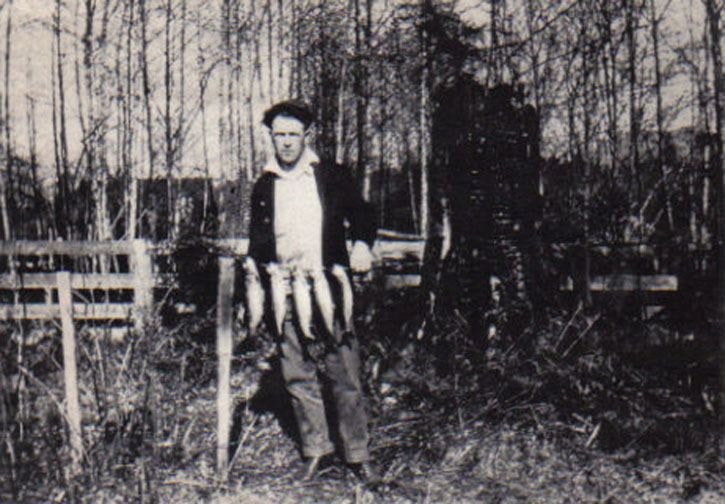Life started out with a good bit of luck for Micky Mitchell, born February 10, 1903, in Frank, Alberta.
Disaster struck the town a few months later, when a 90 million tons of limestone fell in just 90 seconds from Turtle Mountain, burying part of the town under tons of boulders and debris. The baby and his family survived.
His sister, who with the rest of their family survived the ordeal, whisked the baby from the family home to safety.
Others weren’t so lucky.
Of the 600 residents of Frank, 70 died; some in the coal mine of Turtle Mountain, and others in their beds.
The Mitchell family, of which baby James Matthew (later known as Micky) was the youngest, were now without homes and jobs, like most of the surviving residents of this small coal-mining town.
No mine, no town, no work.
And so it was that the family moved to the Vancouver Island coal mining town of Cumberland, where Micky’s father and later his sons, as they became old enough, worked the coal mines. Life went on.
Disaster struck again; this time in the Cumberland mine. On February 8, 1923, a gas explosion in the mine killed 33 men; some merely boys in their teens.
The first of the dead to be pulled from the mine was Micky's younger brother, 15-year-old Bill Mitchell. Bill had filled in for someone else that night. Micky, who worked the day shift, was so affected by his brother’s death that he never again went back to the mine.
Many years later, his daughter Eileen Hildebrandt said, of her dad “That was it, after his brother Bill died he never went back again.”
By 1924, Mick, now 21, was living and working at Cowichan Lake where he’d found a job “setting chokers” for VL & M, right on the spot where today’s high school stands,” recalled Eileen.
A couple of months later, Mick found what would turn out to be steady employment on “the railroad” with his half brother Sam Alexander, who was also an early area resident.
During that same year, Mick married local girl Louise Tiderington, who with her father and brother had come to the Lake at about 1913.
After the birth of their daughter Eileen, two more children – Peggy (Kammerle) and Bob – were born. Later, they would have many grandchildren – most born in Duncan – and many great-grandchildren.
For the rest of Mick’s working life he was employed as a brakeman for the railway. This was before the days of logging trucks, when trains were used to move logs.
“Besides logging, he loved fishing and hunting” recalled Eileen recently.
After retirement from the railway, Mick worked for a couple years as watchman at the Honeymoon Bay mill. He spent his last years fishing and enjoying life at the couple’s lakeside home near Meade Creek with Louise.
Both of them died in the early 1980s, having spent most of their lives at Cowichan Lake.
Still today, there are a few descendants of Mick and Louise living in the area. As well, there are still several “old-timers” around who fondly remember Mick.
Research information by Eileen Mitchell Hildebrandt; a 1968
issue of the Lake News; Frank Slide Interpretive Centre website.
NOTE: According to some reports, a Cumberland mine explosion occurred 6 months prior to the one referred to in this article. Some information sources give the date of the Cumberland mine explosion referred to in this article as February 1923. The BC Government Archives, Vital Stats website gives the date of deaths of the miners as February 8, 1924; the date that was used for this article.
